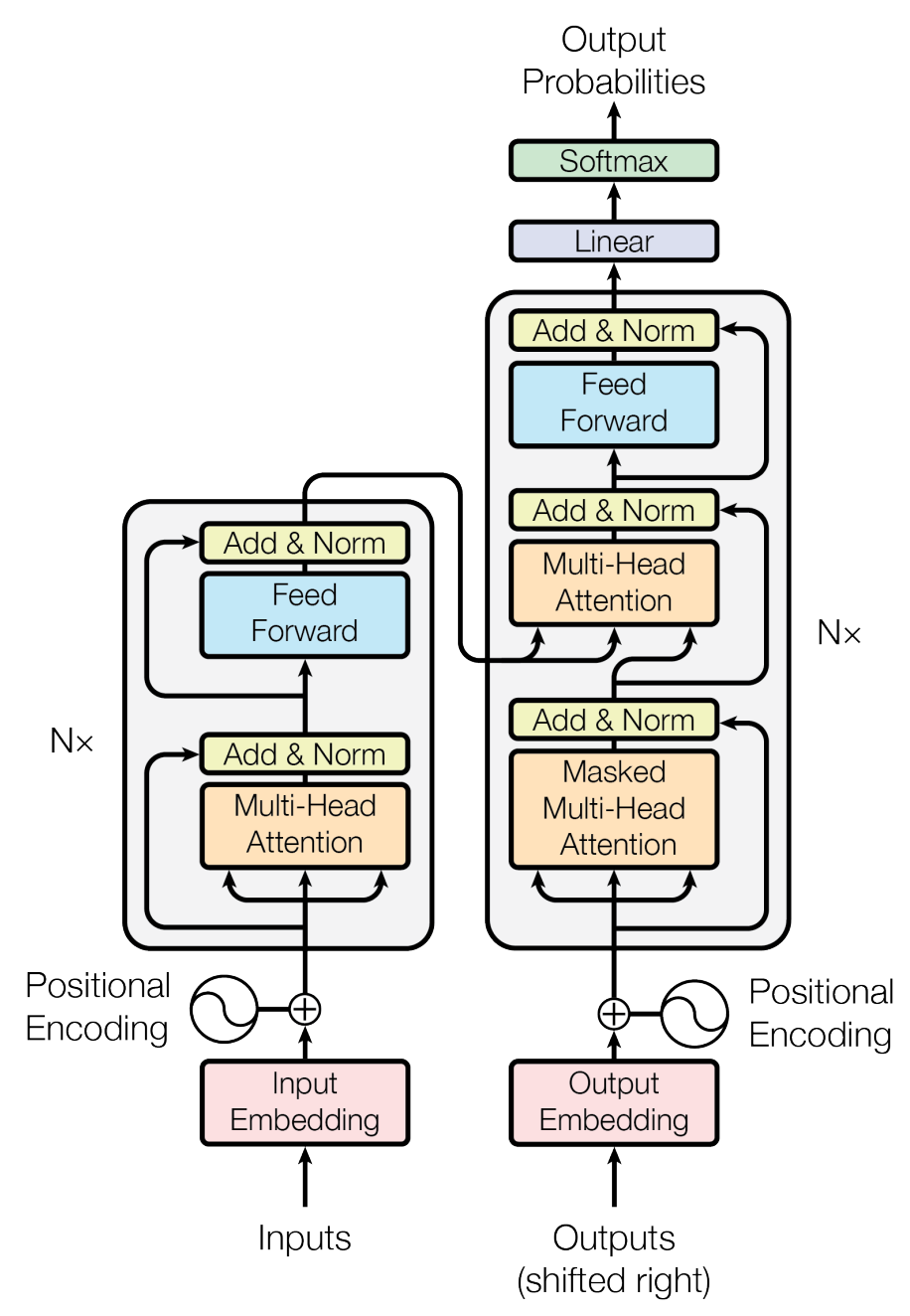Summary: Attention is all you need
Contents
Download the Paper
1. What is the paper about?
This paper proposes the Transformer, a novel Seq2Seq architecture that relies entirely on attention mechanisms, rather than recurrent or convolutional layers, to encode and decode sequences.
This design allows highly parallelizable computations and effectively captures long-range dependencies in sequence data, such as text for machine translation tasks.

2. What is new about this specific paper, compared to prior work?
- Elimination of Recurrent/Convolutional Layers: Unlike earlier Seq2Seq models that used LSTMs, GRUs, or CNNs, the Transformer uses only attention modules (self-attention and encoder-decoder attention).
- The paper introduces multi-head attention, enabling the model to learn from multiple “subspace” representations in parallel.
- Because the architecture does not have a built-in notion of sequence order (as an RNN does through time steps), the authors propose a sinusoidal positional encoding to inject sequence position information.
- By removing the recurrence constraint, the Transformer can process all positions in a sequence in parallel, significantly reducing training time.
3. What experiments were run to support the arguments in this paper?
Machine Translation: experiments on two major datasets:
- WMT 2014 English-to-German: The Transformer reached sota BLEU scores (outperforming previous single and even ensemble models) at the time of publication.
- WMT 2014 English-to-French: A new high performance in translation with significantly less training cost compared to prior sota methods.
Parsing: They also tested the Transformer on an English constituency parsing task (the Penn Treebank WSJ dataset). The model produced competitive results, demonstrating that the architecture generalizes beyond translation.
4. What are the shortcomings/limitations of this paper?
- While self-attention has a constant path length for dependencies, it scales quadratically with sequence length
O(n^2)in time and memory. For very long inputs (e.g., thousands of tokens), this can be expensive. - The attention mechanism is global by design. While this can be advantageous for capturing long-range dependencies, there is no inherent, built-in emphasis on local, contiguous structures (unlike convolutions), which might be suboptimal for certain tasks.
- Although they demonstrated strong transfer to parsing, the Transformer’s performance on other specialized tasks might still need careful modifications or additional modules.
5. What is a reasonable next step to build upon this paper?
- Investigate sparse or local attention mechanisms (e.g., restricting attention to neighborhoods or using learned patterns) to handle longer sequences more efficiently.
- Adapt the architecture to non-text data (e.g., images, audio, video) by combining attention layers with domain-specific preprocessing or embedding methods.
- Explore ways to reduce the one-token-at-a-time decoding bottleneck, potentially via parallel or non-autoregressive decoding approaches.
- Investigate advanced optimization strategies, better positional encoding schemes, or improved architectures that could further reduce memory and computational requirements while preserving or improving performance.